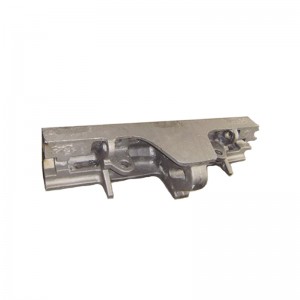تشرینی دووەم . 06, 2024 01:45 Back to list
casting ductile iron
The Significance of Casting Ductile Iron in Modern Manufacturing
Ductile iron, also known as nodular cast iron or spheroidal graphite iron, has gained prominence in various engineering applications due to its exceptional mechanical properties and versatility. It is primarily produced through a casting process, a technique that has been refined over centuries to create complex shapes with remarkable precision. This article explores the significance of casting ductile iron, its advantages, applications, and the challenges faced during the process.
Casting ductile iron begins with the careful selection of raw materials, primarily iron, carbon, and silicon, along with additives like magnesium and cerium. The addition of magnesium is crucial as it promotes the transformation of graphite flakes into a spherical shape during solidification. This unique microstructure is what bestows ductile iron with its superior strength, toughness, and ductility compared to traditional cast iron.
One of the standout features of ductile iron is its exceptional mechanical performance. It can withstand considerable stress and strain, making it suitable for high-load applications. Its tensile strength can surpass that of mild steel, while its elongation properties allow for the absorption of energy without fracturing. This combination of strength and flexibility is particularly advantageous in manufacturing components like crankshafts, gears, and pipes, where durability and reliability are paramount.
casting ductile iron

Furthermore, the casting process itself offers significant advantages. It allows for the production of complex geometries that would be challenging or cost-prohibitive to create using other manufacturing methods. The ability to cast large parts in one piece reduces the need for assembly, which can enhance structural integrity. Additionally, casting can be economically advantageous in high-volume production settings, where the initial setup costs are offset by the scale of production.
The versatility of ductile iron extends to various industries. In the automotive sector, it is frequently used for engine blocks and suspension components due to its strength-to-weight ratio. The plumbing and construction industries also benefit from ductile iron's corrosion resistance and longevity, particularly in pipe systems and manhole covers. In the agricultural sector, it is employed in machinery and tools, highlighting its role in supporting essential industries.
However, casting ductile iron is not without its challenges. Controlling the casting process to achieve the desired properties requires precision, as variations in temperature, material composition, and cooling rates can affect the final product's integrity. Defects such as porosity, shrinkage, and inclusions can arise if the casting process is not meticulously managed. Therefore, manufacturers must invest in quality control measures and advanced technologies to ensure the production of high-quality ductile iron components.
In conclusion, casting ductile iron plays a vital role in modern manufacturing, offering an unparalleled combination of strength, flexibility, and complexity. Its wide-ranging applications across various industries underscore its importance in supporting both traditional and innovative engineering solutions. As manufacturing techniques continue to advance, the demand for ductile iron is likely to grow, further solidifying its position as a material of choice in the modern industrial landscape. By overcoming the challenges associated with the casting process, manufacturers can harness the full potential of ductile iron and contribute to the development of more efficient and durable products that meet the demands of a rapidly evolving market.
-
Durable Cast Steel Concrete Pipe Mold Bottom Rings & Base Trays
NewsAug.23,2025
-
Centrifugally Cast Iron Water Main Pipe for Reliable Mains
NewsAug.22,2025
-
Durable Centrifugally Cast Iron Water Main Pipe
NewsAug.11,2025
-
Centrifugally Cast Iron Water Main Pipes for Reliability
NewsAug.10,2025
-
High-Quality Centrifugally Cast Iron Water Main Pipes
NewsAug.09,2025
-
Durable Cast Iron Water Main Pipe & Drainage Solutions
NewsAug.08,2025


